Diabetic Diet Chart Plan – How to Control Diabetes?
Diet plays a crucial role in controlling and managing diabetes. The management of the disease depends majorly on your diet, along with activity routine and medication. However, it can be very overwhelming when you are looking for food items to add to your meals to keep a check on blood sugar levels. To help you out, we have curated a list of food items that can be incorporated into your diabetic diet plan and diet plan charts that you can follow to manage your diabetic condition efficiently.
Control Diabetes with Diet to Maintain Good Health
Food Items to Include in Diabetes Diet Plan:
Along with whole grains, pulse/lentils, healthy vegetable oils, low fat dairy, a variety of vegetables and fruits, some special foods that you can add to your daily meals are enumerated below.
Remember no food is good or bad – it is the amount you eat that matters.
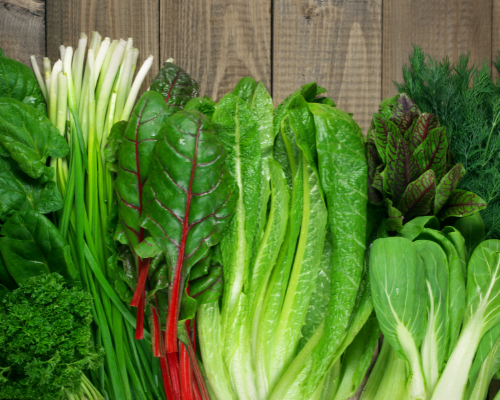
Leafy Green Vegetables
Leafy green vegetables are very nutritious and, at the same time, low in calories as well. They have a lot of essential nutrients and have less digestible carbs that are crucial in lowering blood sugar levels. Also, these vegetables are rich in Vitamin C, which is known to reduce fasting blood sugar levels. Including 100 grams of leafy green vegetables three times a week in your diet would be excellent for diabetes management.
However, if you have high potassium levels in your body, green vegetables should be consumed in restricted amounts. For better understanding, you can consult your dietician and take their advice before changing your diet.

Cinnamon
Cinnamon has high antioxidant properties that help in reducing blood sugar levels and improve insulin sensitivity. A small cup of cinnamon tea can be helpful in managing diabetes well.
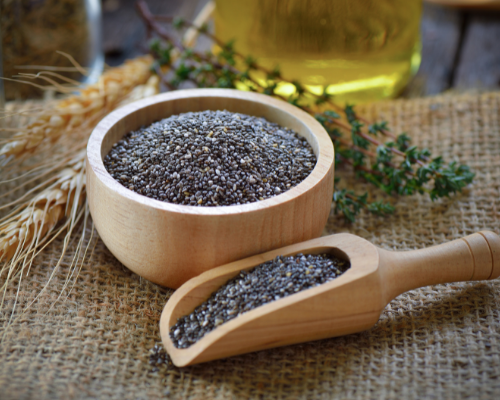
Chia Seeds
Chia seeds are rich in fibre and low in digestible carbs. The fibre content of the seeds lowers blood sugar levels. These seeds have a high quantity of heart-healthy omega-3 fatty acids, which makes them good for people who have high blood pressure. A teaspoon of chia seeds mixed in lemon water or yogurt will be great for diabetes management.
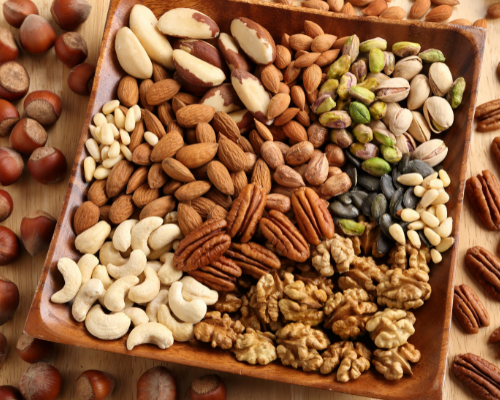
Nuts
Nuts are again rich in fibre and have less digestible carbs. This lowers blood sugar levels and must be included in the diabetic plan chart. Nuts also contain monounsaturated fatty acids that are beneficial in the fight against heart disease. So a handful of mono-rich nuts, like almonds, walnuts, and peanuts into your everyday diet will be very beneficial.
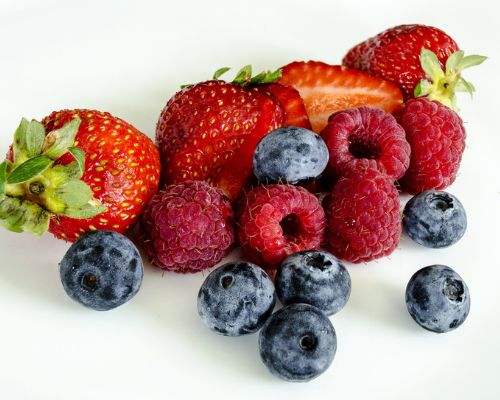
Berries
Because of being rich in antioxidants, berries such as strawberries, blueberries, gooseberries, etc. improve insulin resistance and cholesterol levels in the body. This is very beneficial for people who have Type 2 Diabetes. These can be incorporated in the diet plan as a snack in between meals.
Food Items to Avoid in Diabetes Diet Plan
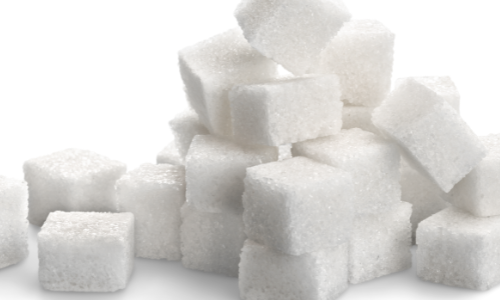
Added Sugars
Sugar is a direct source of glucose and absorbs quickly into the bloodstream. This enhances the blood sugar levels in the body. Some items to avoid with added sugar include cookies, brown sugar, honey, corn syrup, and more.

Refined Carbohydrates
Most processed foods have a high volume of refined carbs, which is harmful to diabetic patients. Some of the items to avoid include cakes, candy, soda, baked goods, and dairy-based desserts.
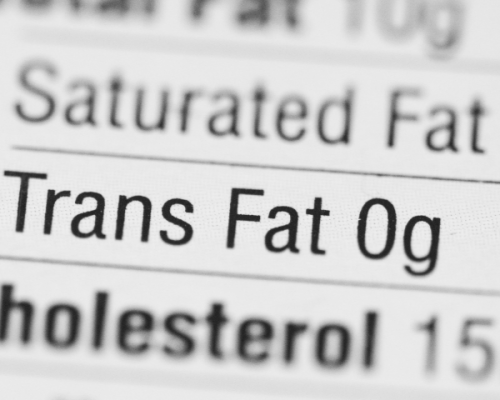
Saturated and Trans Fats
High fat dairy products can also increase blood sugar levels. These products can also increase your risk for heart disease by increasing the cholesterol in your blood. Some of the items you may want to stay away from include cream, whole fat milk, butter, cheese, and more. Other foods to avoid for diabetic patients include foods with high saturated fats, such as processed red meats, sausages, bacon, high sodium foods, and beef.
How to Control Diabetes with a Diet Plan?
One of the best ways to manage diabetes with diet includes following a rigorous Calorie Controlled Diabetic Diet Plan. Here is what it should look like.
A Calorie Controlled Meal Plan
It is evident by the name of the calorie controlled plan that it is lower in calories than what you normally consume. This diet is suitable for people trying to control their blood sugar levels. The diet also helps in losing extra weight. A sudden change in the calorie intake should not be implemented. The calories can be lowered slowly and gradually. Also, this way a person will lose weight naturally and their weight loss journey will be more effective. Along with reduction in calorie consumption, carbohydrate restriction should also be practiced.
However, it should be remembered that the calories required for an individual is based on factors such as the patient’s gender, physical activity levels, Body Mass Index (BMI) and age. A very low calorie diet is not prescribed to everyone because some people can face negative effects due to the diet on their metabolism as well. It is best to consult a dietician to get a proper insight about the diet.
- Early morning: Fenugreek seeds with a glass of warm water. Fenugreek seeds are also known as Methi seeds and are readily available in the market.
- Breakfast: One glass of buttermilk, a fruit (low in calories), and a slice of multigrain or brown bread or a wholewheat chapati.
- Mid Morning Snack: A cup of fruit salad and green tea.
- Lunch:Brown rice or millet rice (50 g), , a bowl of pulses, a bowl of vegetables, and salad serving.
- Post Lunch Snack: Green tea without sugar
- Evening Snack: One bowl of salad or sprouts
- Dinner: A slice of multigrain bread of a wholewheat chapati and one bowl of vegetable
- Post Dinner Snack: Milk without sugar (half a cup)
Points to Note
- This diet only works if the serving portion is also kept in mind. If huge quantities of the items mentioned above are consumed, it may not show any results in controlling blood sugar levels. So, ensure that the given portion size of the food items mentioned is consumed.
- Along with the portion size, another thing to be noted is the timing of the meals you consume. If you eat your meals in a disorderly manner at no proper scheduled timings, the results may also not be as expected.
Ideal Indian Diet Chart for Diabetic Patients
Here is an alternative diet plan for diabetic patients to manage their blood sugar, which includes wholesome indian dishes.
- Early Morning: A glass of lukewarm water with chia seeds or fenugreek seeds. You can also go for green tea.
- Breakfast: A bowl of vegetable oats(rolled) or dalia or millet upma is an excellent option for breakfast. If you can follow a non-vegetarian option, two slices of multigrain bread and an egg white omelette will also work.
- Mid-Morning Snack: A fruit of your choice. Try to opt for apple, guava, pear, orange, as they are low in calories and rich in vitamins. You can also go for roasted nuts and green tea.
- Lunch: Along with wholewheat chapatis, you can go for a bowl of seasonal vegetables. Chicken or fish can also be selected for people who follow a non-vegetarian diet.
- Evening Snack: A fruit or a bowl of nuts again. You can also go for a salad serving of cucumbers, tomatoes, etc.
- Dinner: A bowl of soup with vegetables or a Chicken salad for non-vegetarians. A source of wholegrain cereal like a chila/ millet dosa/bajra ki roti is important to ensure you do not get a hypo attack.
the bottom line
Diet planning can help in managing diabetes well. However, it is vital to conduct proper research before panning out a diabetic diet plan because every patient has a different lifestyle, health condition, and other parameters.
So, it is best to consult an expert dietician from Diahome because they will provide a specific diet based on an individual’s health condition, history of medication and health concerns, availability of food items, and other factors. You can download the Diahome application on your smartphone, and a professional and experienced dietician will connect with you through the app. The best part is, you don’t even have to go out to a clinic to get a proper diet plan for yourself. You will have the diet to manage diabetes right at your home with Diahome.
Authors:
Mrs.Sripriya Ravi, M.Sc, Senior Dietitian
Miss. Priyadharshini M.Sc, Dietitian